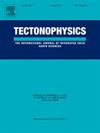Tectonic evolution of the Atlantic rift, central sector offshore Uruguay
IF 2.7
3区 地球科学
Q2 GEOCHEMISTRY & GEOPHYSICS
引用次数: 0
Abstract
The Uruguayan Continental Margin (UCM) is considered one of the most promising frontier areas for hydrocarbon exploration in the South Atlantic. The UCM central sector, corresponding to the transitional region between the Punta del Este and Pelotas basins and where the Rio de la Plata Transfer System (RPTS) is located, exhibits outstanding characteristics such as interruption of the seaward dipping reflectors (SDRs), dislocation of magnetic and gravity anomalies and depocenters, and hyper-thinning of the continental crust. Owing to these characteristics, this sector is a key area for understanding the evolution of the margin during the Atlantic opening and evaluating the real potential of the UCM to contain hydrocarbon accumulations. This study demonstrates the results of a new subsurface mapping method using 2D and 3D seismic data in the central sector of the UCM. Structural interpretations have led to the definition of i) a NW-oriented hyperextended region located where the SDRs are interrupted, characterized by a shallow Moho (˂3 km); ii) a set of NW-SE oriented transtensional faults, some of which reach the Moho, which has delineated a series of discrete grabens; and iii) a Barremian-Aptian depocenter with a rhomboidal geometry, exhibiting the greatest thickness over the hyperextended crust region. The central sector of the UCM concentrates on the extensional processes associated with the breakup of Western Gondwana, which controlled the initial phase of the Atlantic opening in this region. The sinistral transcurrent nature of the RPTS plays a crucial role in generating the transtensional stress field in an extensive regional context. This process reactivates basement-inherited structures with a general NW-SE orientation, leading to the formation of subsidence areas. The proposed new tectonic model will contribute to the knowledge of the hydrocarbon potential of the UCM.
乌拉圭近海中部大西洋裂谷的构造演化
乌拉圭大陆边缘(UCM)被认为是南大西洋最有前途的油气勘探前沿地区之一。UCM中央板块对应于Punta del Este盆地和Pelotas盆地之间的过渡区域,以及里约热内卢de la Plata转移系统(RPTS)所在的区域,具有向海倾斜反射体(sdr)中断、磁重异常和沉积中心错位、大陆地壳超薄等突出特征。由于这些特征,该区域是了解大西洋开放期间边缘演变和评估UCM包含油气聚集的真正潜力的关键区域。这项研究展示了一种新的地下测绘方法的结果,该方法使用了UCM中央部分的2D和3D地震数据。构造解释给出了以下定义:1)一个北西向的超扩展区,位于特别代表断陷处,其特征是一条浅莫霍值(小于3 km);ii)一套北西-东向的张性断裂,其中部分断裂到达莫霍,圈定了一系列离散地堑;(3)巴雷米亚-阿普tian沉积中心,呈菱形,在超伸展地壳区厚度最大。UCM的中心部分集中于与西冈瓦纳破裂有关的伸展过程,该过程控制了该地区大西洋开放的初始阶段。在广泛的区域背景下,RPTS的左旋跨流性质在产生张拉应力场方面起着至关重要的作用。这一过程重新激活了基底继承的构造,一般为北西-东南向,导致沉陷区形成。提出的新构造模型将有助于认识UCM的油气潜力。
本文章由计算机程序翻译,如有差异,请以英文原文为准。
求助全文
约1分钟内获得全文
求助全文
来源期刊

Tectonophysics
地学-地球化学与地球物理
CiteScore
4.90
自引率
6.90%
发文量
300
审稿时长
6 months
期刊介绍:
The prime focus of Tectonophysics will be high-impact original research and reviews in the fields of kinematics, structure, composition, and dynamics of the solid arth at all scales. Tectonophysics particularly encourages submission of papers based on the integration of a multitude of geophysical, geological, geochemical, geodynamic, and geotectonic methods
 求助内容:
求助内容: 应助结果提醒方式:
应助结果提醒方式:


